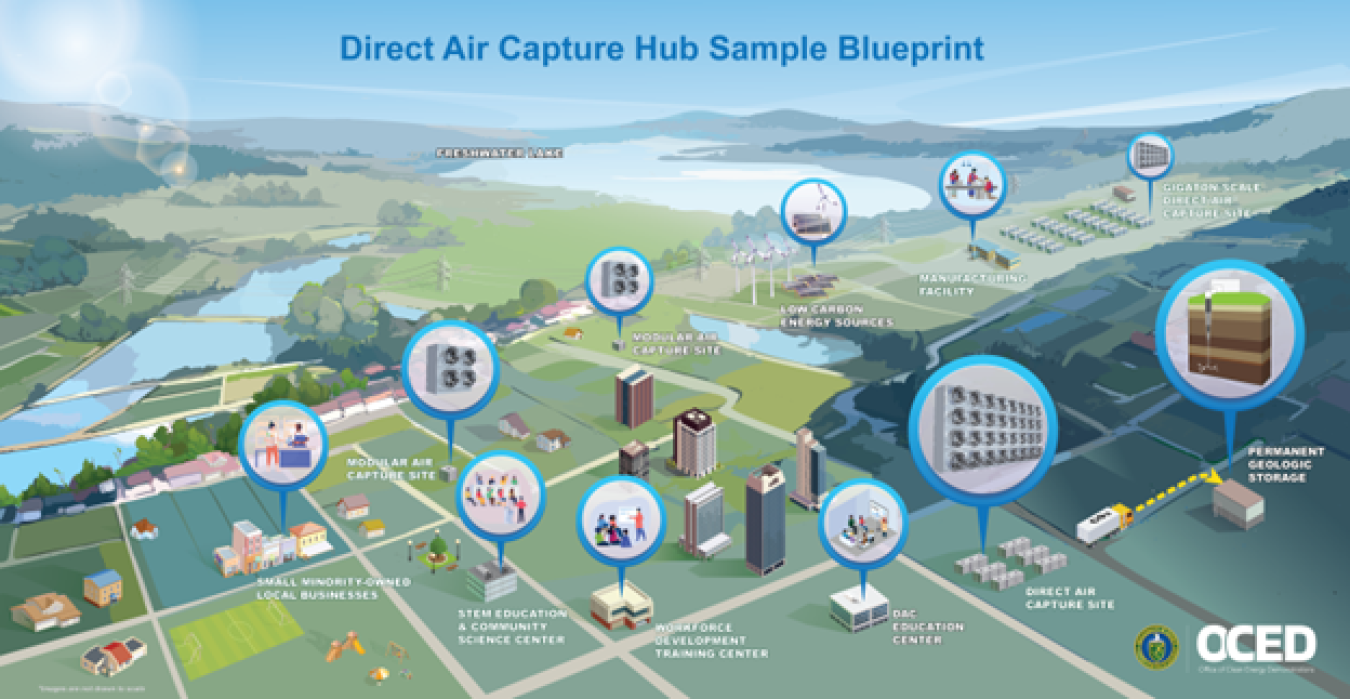
Direct air capture technology is a form of carbon dioxide (CO2) removal that takes CO2 from ambient, or still, air. The separated CO2 can then be permanently stored deep underground, or it can be converted into products.
Carbon dioxide removal is increasingly important because CO2 emissions are warming the Earth’s climate in ways not seen in millions of years. These emissions are causing wildfires, floods, and storms. They are also threatening sea life due to increased acidity in the oceans. Direct air capture has a critical role in helping the United States address legacy emissions and is a key approach needed to achieve a net-zero emissions future by 2050.
Scientists use two broad approaches for direct air capture: liquid solvents and solid sorbents.
- Solvent-based direct air capture systems pass air through chemicals that remove the CO2. Existing systems use a combination of heat and vacuum to remove the captured CO2 and return the chemicals to the direct air capture process. The system then returns the treated air—now with less CO2—to the atmosphere.
- Sorbent-based direct air capture systems use physical filters. These filters chemically bind with CO2 molecules. When the filters are heated and/or placed under a vacuum, they release the CO2, which is now in a concentrated stream. This concentrated CO2 stream is either stored in geologic formations or used. For example, researchers are working on approaches for converting CO2 into building materials, chemicals, and fuels.
The downside to direct air capture is its current cost. Removing CO2 from the air takes lots of power because only a tiny percentage of the atmosphere is made up of CO2. The technology also involves costs to store or use the captured CO2.
The Department of Energy (DOE) and other organizations are working on the science and technology to bring these costs down. For example, DOE launched the Carbon Negative Shot initiative—a call for innovation in carbon dioxide removal pathways that will capture CO2 from the atmosphere and store it at 1 billion ton scales for less than $100 per net metric ton of CO2-equivalent.
DOE Office of Science: Contributions to Direct Air Capture
DOE supports direct air capture research, development, and demonstration through the Offices of Fossil Energy and Carbon Management and Clean Energy Demonstrations and the Advanced Research Projects Agency–Energy.
DOE also supports research on direct air capture through the Office of Science Basic Energy Sciences (BES) and Biological and Environmental Research (BER) programs. BES supports the foundational science behind materials, chemicals, and biochemical and geological processes associated with the capture, conversion, and sequestration of CO2. These areas are all involved in direct air capture technology. BER supports research to understand atmospheric CO2 and other greenhouse gases.
DOE also participates in the U.S. Carbon Cycle Science Program, a multi-agency effort to coordinate U.S. carbon cycle science.
Additional Resources and Related Terms
- DOE Fact Sheets:
- Read the Carbon Management Commercial Liftoff
- Watch the Carbon Management Liftoff Webinar
- Learn more about DOE’s Regional Direct Air Capture Hubs
Scientific terms can be confusing. DOE Explains offers straightforward explanations of key words and concepts in fundamental science. It also describes how these concepts apply to the work that the Department of Energy’s Office of Science conducts as it helps the United States excel in research across the scientific spectrum.

